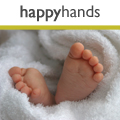Toddler Clinic
Development
How to start potty training
Some people like to encourage potty or toilet training from an early age. You will need to gauge your own child’s readiness, but whenever you do it, make sure you and your partner or any carer are all set to begin training at the same time.
When to potty train
Although there are supporters of the ‘no nappy’ approach from day one, using nappies on babies or toddlers does usually allow them to achieve other milestones like crawling, cruising, and walking before switching routines to accommodate a change of toilet habits.
Some parents do like to attempt potty training as early as 18 months, but usually some time between two and three years is more common, and in some cases you might find that daytime potty use begins a long time before your child is ready to go through the night without a nappy on.
Getting your child used to a potty might take as little as a week or up to a month, but be patient and see this as an exciting adventure for both of you!
Potty training steps
• Shop for a potty, inviting your child to do this with you. After all it will be just for his use.
• When it’s at home, let your child sit on it to play or read with you, getting used to the idea of having his own potty, making sure that your child understands what this might be used for in the coming weeks.
• Talk to your child about using the potty for weeing first. You can keep nappies on, but move to using pull-ups and encourage your child to let you know when he wants to wee.
• Having a poo can feel very different for a child when in a potty or on the toilet, and some find this quite upsetting at first, so using the potty for weeing is a good starting point.
• When your child does want to try pooing in the potty, sit down at his level and offer to hold his hands, this might reassure him when he first attempts to this very strange act.
• Go at your child’s pace. If he isn’t enjoying the experience, put the potty away for a couple of weeks and suggest it another try when he’s on good form (for example, not too tired from getting used to nursery routine or feeling a bit under the weather).
• If your child wants to try using the toilet like you, it might be a good idea to buy a smaller seat that fits into the big one. This will make your child feel part of the family and less like a baby whilst being comfortable and protected from falling into the big daunting hole in the regular toilet seat.
• When you are at home, you might want to allow your child to roam around without clothes on so that if the desire to go to the toilet comes on quickly, he doesn’t have an ‘accident’. If he does wet or soil his trousers at home or when out, don’t tell him off, just calmly and reassuringly change his clothes.
• Accept that accidents will happen. Having spent a couple of years in nappies, your child may take a while to get used to consciously stopping what he’s doing and sitting on the toilet or potty. And even the most confident potty user will be in situations sometimes where he’s enjoying an activity so much that he forgets to take a loo break.
• For a couple more years it will be a good idea to keep wipes and spare clothes with you when out and about.
Related Articles
Games to play with toddlers and preschoolers
Preparing Premature Infants for School
BornFree – the natural approach to bottles
Buyer's guide to nappy rash treatments
Business profile: Claire Fuller - Mabymule
Business Profile: Lucie Trinco - Il Tutto
Sumtastic - what's it all about?
Related Products
Milton, Mini Soother Steriliser
Have Your Say
Be the first person to comment on this article, just post a comment below.






In order to post a comment you need to be a member. Join Now | Sign in